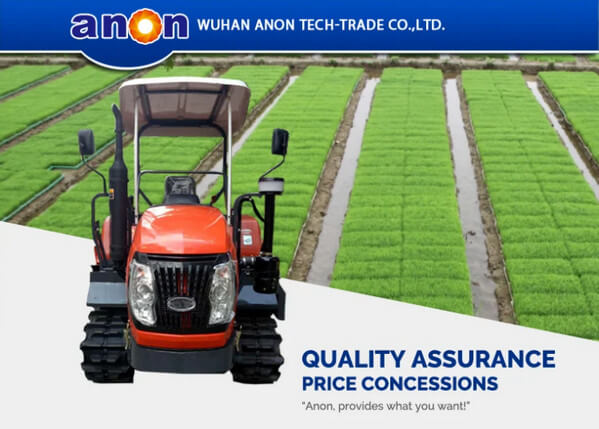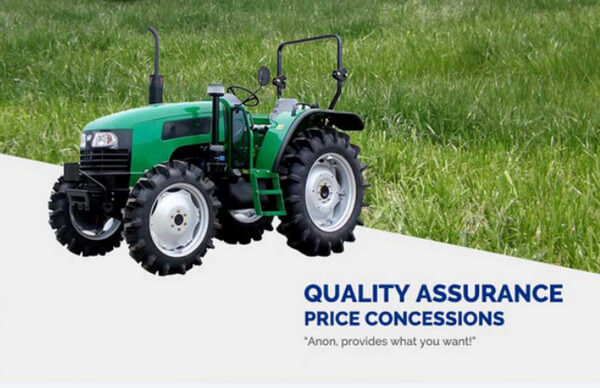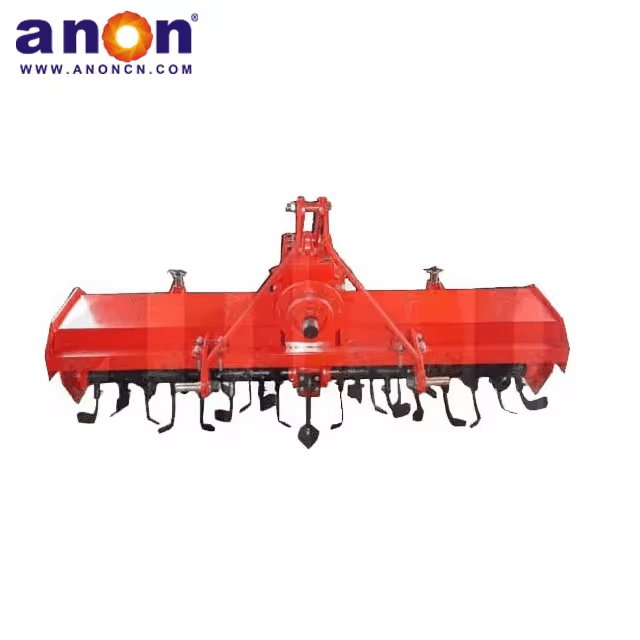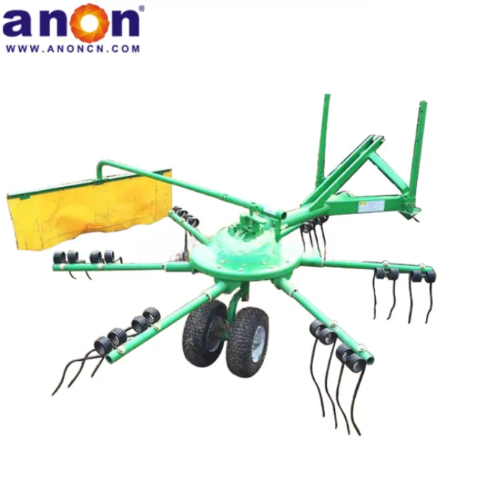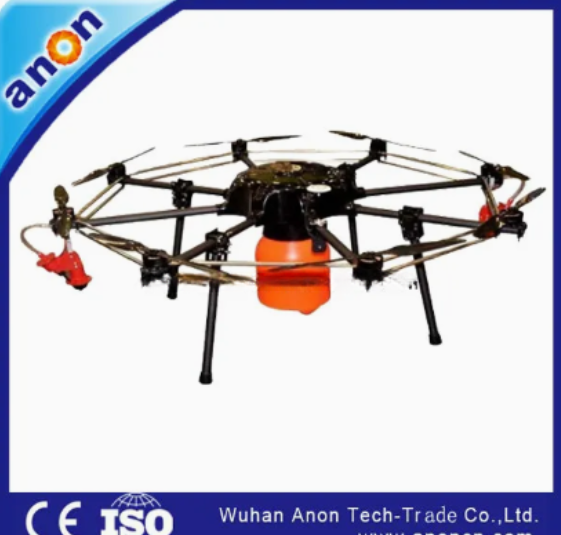Introduction
During the growth of crops, you need to manage the field to get good production. However, crops are delicate, and traditional machinery can easily damage them. Are you struggling with how to solve this problem? Why not try a cultivator? In this article, I will explain the relevant information about cultivators to you.
What is a Cultivator
A cultivator is an innovative farming machine that can perform tasks like removing weeds, breaking up soil compaction, loosening soil, and creating ridges during crop growth. Most importantly, it can break up the soil without disturbing or changing the soil structure, making it easier to manage weeds and improve soil aeration, which helps increase crop yield.

How Does a Cultivator Work
Components of Cultivator
Frame: The frame comes in two types: single-beam and double-beam. The double-beam frame can be equipped with a fertilizing device during operation. The main purpose of the frame is to connect the other parts of the machine for cultivation and ensure that the machine works properly.
Working Parts include tools like weeding shovels, loosening shovels, and ridging shovels, as well as rotary hoes and spring tines. They perform tasks such as weeding, loosening the soil, ridging, and making raised beds. Spring tines are made of spring steel and have excellent flexibility.During homework, it can stretch and contract elastically with the terrain to reduce damage to crop roots.
Seedling guards mainly prevent soil clods from pressing down on seedlings and protect them from damage by shovels. Common types include rolling, baffle, and shield types. Rolling guards resist grass entanglement. Baffle guards follow the ground shape well and can pass over obstacles. Shield guards offer strong protection.
Contour-following Mechanism: The contour-following mechanism allows the machine for cultivation to maintain a stable working depth, even on uneven ground. It moves up and down to adjust to the changes in terrain.
The ground wheels support and balance the machine for cultivation, and also help drive the working parts to perform their tasks.
The Working Principle of Cultivator
The operating principle of the machine for cultivation is quite simple. When the cultivator is pulled by a tractor, the tips of the working parts, like the hoe-shaped blades, break and loosen the soil. The weed-removing blades cut through the roots of weeds between the crops.
If it’s a flat soil-mounding blade, the tip will cut into the soil. As the machine moves forward, the broken soil rises along the blade surface, and the soil-mounding walls push it to the crop roots, forming a ridge.
For the curved soil-mounding blade, after cutting the soil, the broken soil rises along the curved surface. Some of it goes to the crop roots, while the rest falls into the furrow behind the ridge.
Types of Cultivator
According to different application scenarios, cultivators can be classified into hoe-blade cultivators, rotary cultivators, and spring-tine cultivators for dryland farming, as well as rice field cultivators designed specifically for use in paddy fields.
Shovel-Type Cultivator
First is the shovel-type cultivator, which uses various shovels as its working parts. It works with a tractor, usually connected by a rear-mounted suspension. The rear-mounted inter-row shovel-type cultivator consists of a frame and several individual cultivating units. Its main working parts are shovels. Based on their function, the shovels can be divided into weeding shovels, soil-loosening shovels, and ridging shovels. Next, I’ll explain the features of each type of shovel.
Weeding Shovel

From left to right, they are the single-wing blade, double-wing blade, and double-wing general-purpose blade.
The commonly used weed-removing blades are either single-wing or double-wing blades. A single-wing blade consists of a horizontal hoeing edge and a vertical guard plate. The horizontal edge is used for weeding and loosening the soil, while the vertical guard plate prevents soil from covering the plants.
Additionally, the lower part of the guard plate has a cutting edge that prevents grass from getting caught and causing blockages. In the early stages of crop growth, you should often use single-wing blades. You need to place the blade on both sides of the seedlings, and its working depth is shallow, usually less than 6 cm. The blade comes in left and right versions.
The double-wing blade has two wings, similar to the wings of a paper airplane, and is divided into a double-wing weed-removing blade and a double-wing general-purpose blade. The bottom of the double-wing weed-removing blade connects to the vertical guard plate, and the angle between the blade surface and the ground is small, making it very effective at weeding. However, its ability to loosen soil is weak, so it is usually used together with a single-wing blade. The top of the double-wing general-purpose blade connects to the vertical guard plate, and the angle between the blade surface and the ground is larger. It can work at a depth of 8 to 12 cm, offering good performance for both weeding and loosening the soil.
Loosening Shovel

From left to right, they are the chisel-shaped soil-loosening blade, the pointed soil-loosening blade, and the arrow-shaped soil-loosening blade.
The soil-loosening blade is commonly used to loosen the soil between crop rows. It effectively loosens the soil without turning it over, which helps reduce extra disturbance to the land. The working depth can reach 13 to 16 cm. The soil-loosening blade is made up of two parts: the tip and the handle. The tip is the main working part of the blade, and there are three common types: chisel-shaped, pointed, and arrow-shaped.
The chisel-shaped soil-loosening blade is narrow and curved like a sickle. Its tip has a strong soil-breaking ability, allowing for deeper soil loosening. The pointed soil-loosening blade has a triangular tip, which is good at breaking and loosening the soil after plowing. The arrow-shaped soil-loosening blade has a triangular tip at the front and an inverted triangle at the back. It is best suited for the first round of soil loosening during cultivation.
Ridge Shovel

The one on the left is the flat soil-mounding blade, and the one on the right is the curved soil-mounding blade.
The soil-mounding blade is used to mound soil and create furrows. It loosens the soil and then pushes it to both sides. The soil-mounding blade is a bit more complex, made up of the tip, the body, and the soil-mounding wall.
The soil-mounding blade comes in two types: flat and curved. The curved type, also known as the plow-style soil-mounding blade, has a rounded arc on both the tip and body, while the left and right soil-mounding walls have semi-spiral curves, making it very effective at breaking up soil. The width between the left and right soil-mounding walls can be adjusted, ranging from 27 cm to 43 cm, to meet most of your soil-mounding and furrowing needs.
The flat-type soil-mounding blade has a flat body and a soil-mounding board. It is mainly used for weeding and loosening the soil. To create ridges and mound the soil, it needs to be used with the soil-mounding board. During the first cultivation, the soil-mounding board is not used. On the second round of soil loosening, when paired with the soil-mounding board, it can effectively create ridges.
Rotary Cultivator

A rotary cultivator mainly uses blades mounted on a rotating shaft to cut and loosen the soil. It is a type of cultivator characterized by its rotating working parts. As the blades rotate, they throw the soil outward using centrifugal force, achieving soil loosening, weeding, and ridging effects. The main working parts are the rotary shaft and blades. The blades are usually curved or straight-edged, and they create a cutting area through high-speed rotation. Rotary cultivators are commonly used for inter-row or full-field management.
The working parts of a rotary cultivator are driven by the tractor’s power take-off (PTO). Through high-speed rotation, the machine performs tasks such as weeding and loosening the soil. During operation, the rotating blades cut and turn the soil, slice through weeds, and mix them into the soil. At the same time, they loosen the topsoil and improve soil aeration.
Protective covers are installed on both sides of the rotating parts. These prevent soil from being thrown onto the crops and help ensure safety during operation.
Rotary cultivators have strong soil-crushing performance. The high-speed blades break up soil effectively, making the machine suitable for hard or compacted fields. Operators can adjust the blade speed, guard angles, and other settings to match different crop and soil conditions. The design of the guards and contour-following mechanisms helps reduce the risk of damaging seedlings, making it ideal for inter-row cultivation.
Spring-Tine Cultivator
The spring-tine cultivator is a type of inter-row weeding and soil-cultivating equipment that uses flexible tines as its primary working components. It plays a vital role in loosening soil, removing weeds, and breaking up surface compaction, particularly in wide-row crops during the seedling stage.
The working process of a spring-tine cultivator involves the interaction between the tines and the soil. Pulled by a tractor, the sharp, angled tips of the spring tines penetrate the soil to a certain depth. As the machine moves forward, the tines vibrate and bounce, loosening the soil, breaking crusted surfaces, and uprooting or burying shallow weeds — achieving both weed control and moisture conservation.
This type of cultivator features a simple structure, causes minimal damage to crops, and offers good flexibility. When encountering obstacles like stones or hardened soil clods, the spring tines flex to absorb the impact, reducing the risk of damage to both the implement and the crops.
Paddy Field Cultivator

A paddy field cultivator is a type of agricultural machine specially designed for cultivation work in rice fields. It is mainly used during the growth stage of rice for tasks such as soil crushing, weeding, and field leveling. This machine plays an important role in improving rice yield and quality.
The paddy cultivator breaks up compacted soil through mechanical operation and stirs the soil to improve aeration. At the same time, it removes weeds, reducing competition for nutrients and water. It can also push soil toward the base of the rice plants, encouraging root development and helping the plants resist lodging.
In addition, cultivation promotes microbial activity in the soil, speeds up fertilizer decomposition, and improves fertilizer use efficiency.
The Functions of a Cultivator
Digging and Weeding
When the machine for cultivation is in operation, it loosens and mixes the soil in the plow layer, helping to evenly distribute water and nutrients in the soil. This promotes the growth of crop roots. Additionally, as the machine for cultivation moves forward, the weed-removing blades cut and bury the weeds between the crops, removing them so they don’t compete with the crops for nutrients.
Breaking the soil surface compaction
Tilling is good for the land, but too much tilling can cause soil compaction, which harms crop growth. The tip of the machine for cultivation’s blade can effectively break up the soil’s surface without disturbing the rest of the soil.
Ridging
Some crops, like sweet potatoes, tomatoes, potatoes, and various leafy vegetables, need ridges to grow better. When the cultivator performs soil-mounding, the soil-mounding blades push the soil around the crop roots to form ridges. This helps create more space for the crops to grow.
Fertilizing
As I mentioned earlier, if the cultivator has a double-beam frame, it can add a fertilizer box. This allows the machine to not only till the soil but also apply fertilizer to the crops at the same time.
How to Maintain a Cultivator
Cleaning and Storage
After tilling the soil, you should clean the machine for cultivation promptly. Wash off any grass or mud that has wrapped around it, then wipe it dry with a clean cloth. When storing the machine for cultivation, keep it in a dry, well-ventilated place, away from direct sunlight and rain. Make sure to cover it to protect the machine.
Inspection
Before and after use, you should check the cultivator thoroughly, especially the working parts. The weed-removing blade, soil-loosening blade, and soil-mounding blade need to be sharp to effectively break the soil. If you find that the working parts are badly worn during the inspection, replace them promptly, or it will affect the machine’s performance.
Maintenance
In addition to checking before and after use, you also need to maintain the machine for cultivation. If you use the machine frequently, you should maintain it every 2 to 3 days. If you use it less often, do the maintenance weekly. During maintenance, add lubricating oil to reduce wear on the machine.
Conclusion
After reading this article, do you have a better understanding of the cultivator? If you still have any questions, feel free to contact us. At ANON, we offer a variety of cultivators, and we’re sure we have one that will meet your needs.
FAQ
1. Is there any advantage to using a cultivator?
The cultivator effectively weeds and loosens the soil, allowing crops to grow with even nutrients. This means you can reduce the use of herbicides.
2. What is the difference between a cultivator and a tiller?
Both cultivators and tillers are used to prepare and maintain garden soil, but their main functions and operating depths are different. The design purpose of a tiller is to break up hard, compacted soil and prepare a new garden bed, while a cultivator is used for weeding and ventilating the soil around existing plants.
3. When to use a cultivator?
If your garden soil is compacted or lacks nutrients, you may want to loosen and enrich it through farming and/or cultivation. This work is best done in early spring, when the soil has already warmed and dried up since winter.


